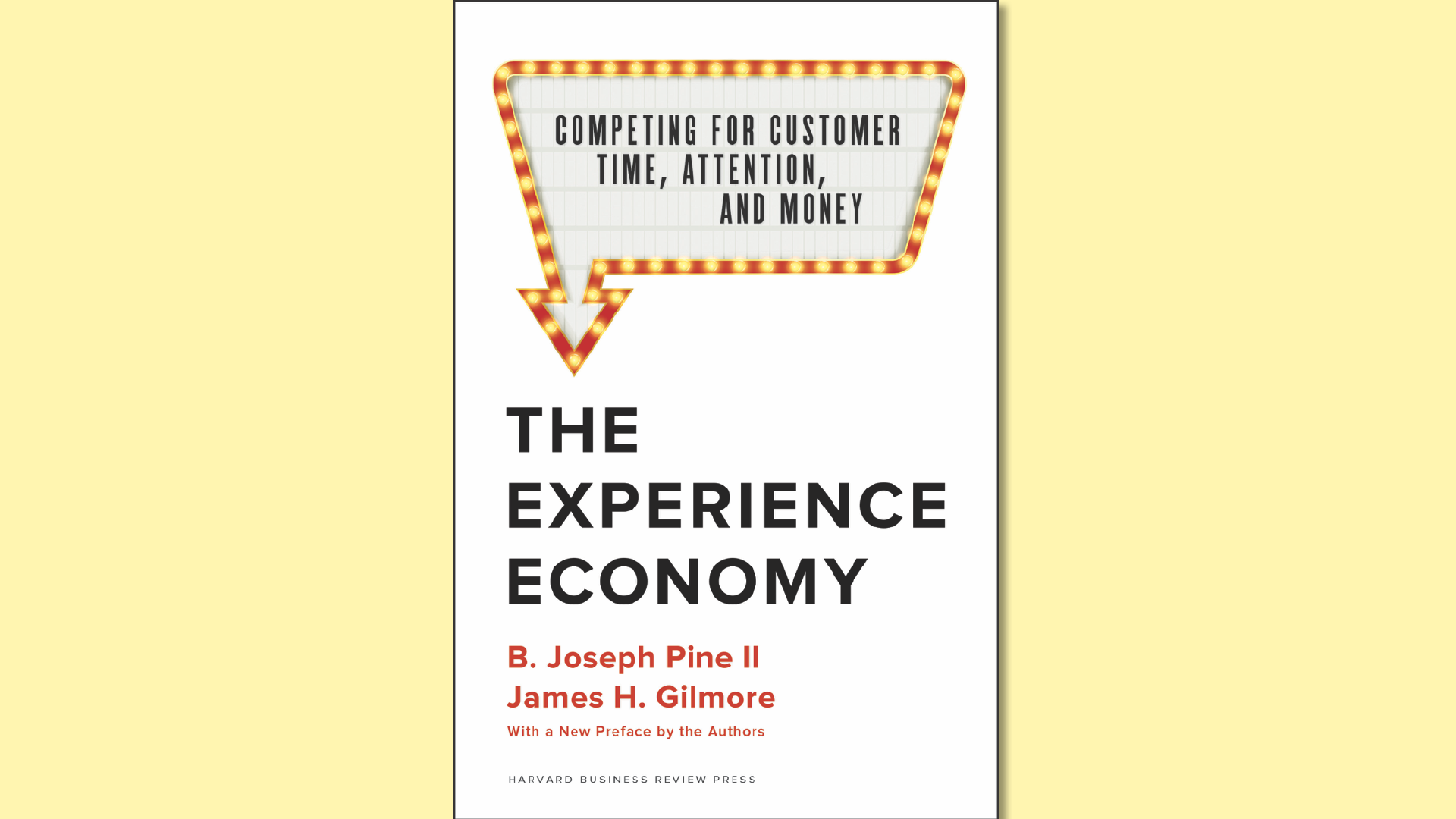Summary: The Experience Economy by Pine and Gilmore

Welcome, entrepreneurs! In today’s dynamic business landscape, inspired by Joseph Pine II and James H. Gilmore’s seminal work, “The Experience Economy,” success hinges on the quality of products or services and the experiences we create for our customers. In this blog post, we delve into the transformative realm of the experience economy, exploring key concepts and practical strategies to thrive in this ever-evolving market.
Understanding the Experience Economy:
Coined by Pine and Gilmore, the experience economy posits that businesses should focus on delivering immersive and memorable experiences to customers. Gone are the days when merely offering goods or services sufficed; today’s consumers crave more—they seek meaningful engagements that resonate with their emotions and intellect.
Experience Staging:
Every customer interaction is a stage; as entrepreneurs, we are the directors. Craft experiences that captivate the senses evoke emotions and stimulate the mind. Oscar Wilde once said, “The essence of the theatre is not the presence of reality but the absence of reality. It is the presence of the spectator’s consciousness of an experience in which he is not involved.” For example, a coffee shop that stages live music performances creates an atmosphere where customers can enjoy a beverage and a cultural experience. To enhance experience staging, experiment with lighting, music, and decor to create an ambiance that resonates with your target audience.
Customization:
Embrace the power of personalization. Tailor experiences to individual preferences and desires, creating a sense of exclusivity and connection. Kate Zabriskie famously said, “The customer’s perception is your reality.” Consider a subscription-based meal kit service that allows customers to customize their weekly meal selections based on dietary preferences, ensuring a personalized culinary experience. Implement a user-friendly online platform where customers can easily customize their orders and provide feedback for future improvements.

Customer Participation:
Engage customers actively in the experience. Provide opportunities for interaction, co-creation, and immersion, fostering a sense of ownership and engagement. Jerry Gregoire states, “The customer experience is the next competitive battleground.” An example of this is an escape room adventure game that challenges participants to solve puzzles and complete tasks collaboratively, fostering teamwork and active engagement. Incorporate gamification elements such as leaderboards, rewards, and challenges to enhance customer participation and enjoyment.
Memory Creation:
Aim to leave a lasting impression. Design experiences that are enjoyable but also memorable and shareable, driving positive word-of-mouth and brand advocacy. Shiv Singh once said, “The purpose of a business is to create a customer who creates customers.” Consider a boutique hotel that offers complimentary photography sessions for guests, capturing special moments during their stay and creating lasting memories to cherish. Provide unique souvenirs or keepsakes that customers can take home as mementos of their experience, reinforcing positive memories and encouraging repeat visits.
Transformation:
Aspire to transform customers in some way. Whether through enlightenment, inspiration, or personal growth, they strive to make a meaningful impact on their lives. Damon Richards famously said, “Your customer doesn’t care how much you know until they know how much you care.” For example, a mindfulness and wellness retreat provides workshops and activities aimed at helping participants reduce stress and achieve greater mental clarity, fostering personal transformation. To facilitate ongoing growth and development, offer follow-up resources or support to customers after their experience, such as educational materials, community forums, or personalized coaching sessions.
Practical Strategies in Experience Design:
Design Thinking:
Adopt a human-centered approach to experience design. Understand your customers’ needs, desires, and pain points, and use empathy to craft experiences that resonate deeply. Conduct user research through surveys, interviews, and observation to gain insights into your target audience’s preferences and behaviors, guiding the design process.
Technology Integration:
Leverage technology to enhance experiences. Whether augmented reality, virtual reality, or immersive storytelling, harness innovative tools to create unforgettable moments. Partner with technology experts or startups to explore cutting-edge solutions and stay at the forefront of technological advancements in the experience industry.

Employee Engagement:
Recognize the pivotal role of employees in delivering exceptional experiences. Empower and train your team to embody your brand’s values and deliver stellar service at every touchpoint. Foster a culture of continuous learning and development within your organization, providing employees with opportunities for skills enhancement and career growth.
Continuous Innovation:
Stay ahead of the curve by continually innovating and iterating on your experiences. Monitor industry trends, gather customer feedback, and adapt your offerings to meet evolving demands. Establish a dedicated innovation team or committee tasked with exploring new ideas, conducting experiments, and driving forward-thinking initiatives within your business.
Memorable and transformative experiences
In conclusion, inspired by “The Experience Economy,” entrepreneurs have a unique opportunity to redefine success by prioritizing creating memorable and transformative experiences for their customers. By embracing the key concepts and implementing practical strategies outlined in this post, entrepreneurs can position themselves as leaders in their respective industries, driving growth, loyalty, and advocacy. Let’s embark on this journey of innovation and transformation together, inspired by the wisdom of Pine and Gilmore, and pave the way for a future where experiences reign supreme.
